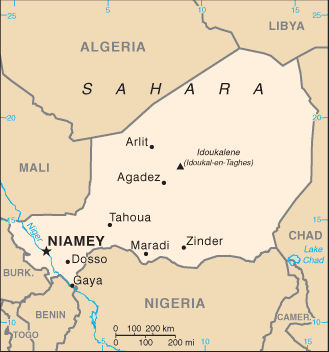The number of additional cases of meningococcal disease cases in Niger has increased by nearly 800 in a week, according to Niger’s Health Minister Mano Aghali this past weekend.

The number of cases increased from 5,855 last week to more than 6,600 and the fatality count grew to 443, up from 406 just one week ago.
The hardest hit age group are children, ages 2 to 15. Niamey, Dosso, Tillaberi, Tahoua and Maradi are the regions most affected by the epidemic, the minister said.
“Today, thanks to taking good care of patients, launch of vaccination campaigns, support from our partners and all the efforts deployed by the state in terms of sensitization, we can say the situation is under control,” Aghali said.
Niger sits in what is called the “meningitis belt” that stretches across sub-Saharan Africa. PATH, the global health international nonprofit organization says about 450 million people are living in the “meningitis belt” are at risk of contracting meningococcus type A, the strain most commonly found in the region.
However, WHO says the epidemic in Niger and neighboring Nigeria is being caused by different strain of the deadly bacterium, in fact, two strains–meningococcus C and to a lesser extent, meningococcus W135.
Neisseria meningitidis, the causative agent of meningococcal disease, is a gram-negative diplococcus. Meningococci are classified into serogroups on the basis of the composition of the capsular polysaccharide. The 5 major meningococcal serogroups associated with disease are A, B, C, Y, and W-135.
Meningitis-causing bacteria colonize the back of the throat and can spread quickly through sneezing and coughing in the region’s often overcrowded and poor living conditions. According to the CDC “Yellow Book”, the symptoms of meningococcal disease can vary based on the type of illness that develops. Common symptoms of meningococcal meningitis include sudden fever, headache, and stiff neck. Other symptoms can include nausea, vomiting, increased sensitivity to light, and confusion.
Children and infants may show different signs, such as inactivity, irritability, vomiting, or poor reflexes. Meningococcal disease can also cause an infection of the blood which can lead to tiredness, vomiting, cold hands and feet, chills, severe aches and pain, fast breathing, diarrhea, and a dark purple rash. Meningococcal disease is very serious and can be fatal. In fatal cases, deaths can occur in as little as a few hours.


It’s actually a cool and helpful piece of information. I’m satisfied that you simply
shared this useful info with us. Please keep us up to date like this.
Thank you for sharing.